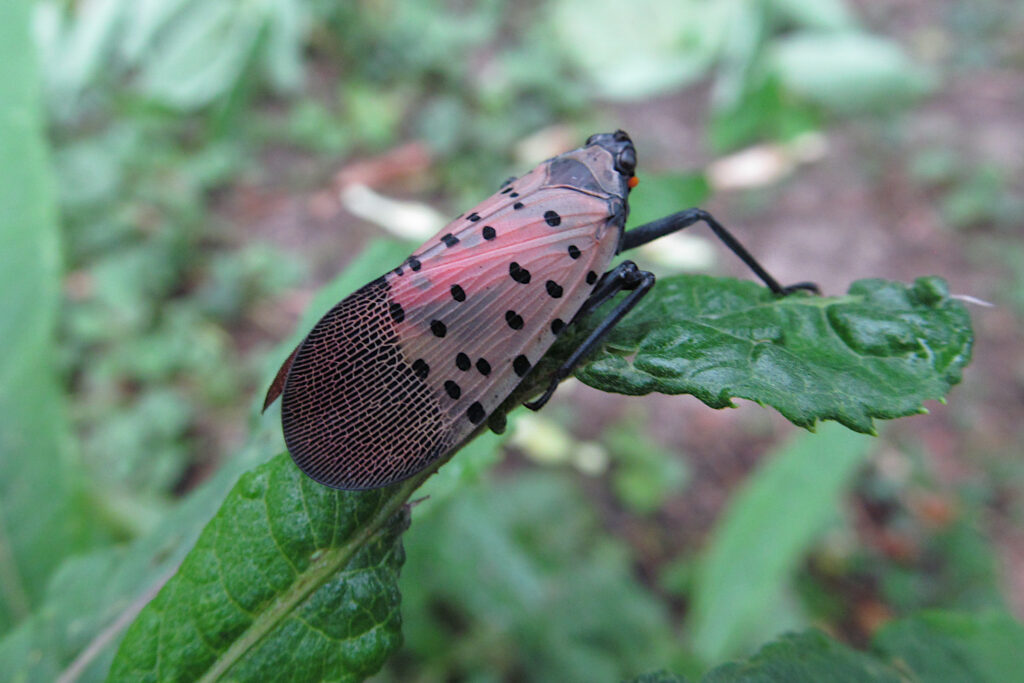They arrive quietly, often as stowaways in cargo containers, clinging to imported plants, or hiding in the crevices of international shipments. These six-legged invaders don’t announce their presence with fanfare, but their impact on American ecosystems, agriculture, and daily life can be absolutely devastating. While most people are familiar with obvious troublemakers like fire ants or Asian hornets, countless other invasive insects have already established themselves across the United States, silently reshaping environments and threatening native species in ways that would shock even seasoned entomologists.
The reality is more alarming than most Americans realize. Every year, dozens of non-native insect species slip past our defenses, and many have been thriving in our backyards, forests, and farms for decades without widespread recognition. These creatures don’t just represent a minor inconvenience—they’re biological time bombs that can devastate entire ecosystems, cost billions in agricultural damage, and fundamentally alter the delicate balance of nature that took millennia to establish.
The Brown Marmorated Stink Bug: A Malodorous Menace
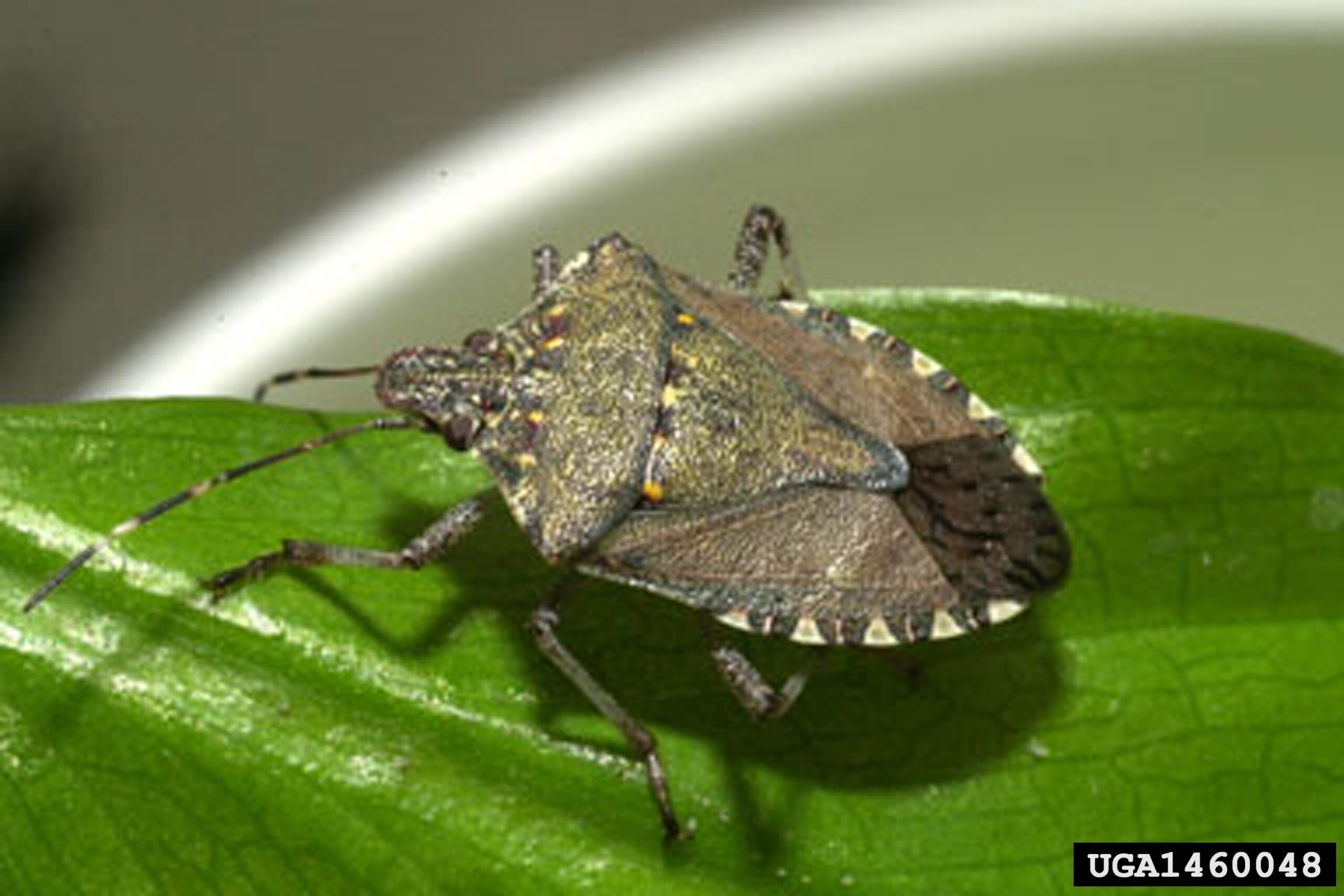
This seemingly innocent shield-shaped insect has become one of the most economically destructive invasive species in North America, causing hundreds of millions of dollars in crop damage annually. First detected in Pennsylvania in 1996, the brown marmorated stink bug likely arrived from Asia and has since spread to over 40 states with frightening efficiency.
What makes this pest particularly insidious is its incredible versatility—it attacks over 100 different plant species, from soybeans and corn to apples and grapes. Unlike native stink bugs that typically specialize in specific crops, this invader treats American agriculture like an all-you-can-eat buffet. The bug’s piercing mouthparts inject enzymes that break down plant tissues, leaving behind dimpled, discolored patches that render produce unmarketable.
Perhaps most frustrating for homeowners is the bug’s tendency to invade houses in massive numbers during fall, seeking warm overwintering spots. They squeeze into wall voids, attics, and any available crack, only to emerge in spring as sluggish, foul-smelling reminders of nature’s persistence. When disturbed, these insects release a distinctly unpleasant odor that can linger for hours, making them unwelcome houseguests that overstay their welcome.
Emerald Ash Borer: The Tree Killer in Designer Green
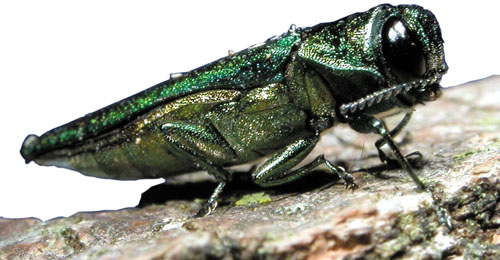
Behind its jewel-like emerald exterior lies one of the most destructive forest pests North America has ever encountered. The emerald ash borer arrived from Asia around 2002, probably in wooden packing materials, and has since killed hundreds of millions of ash trees across the continent. This metallic green beetle might be beautiful to look at, but its larvae are merciless destroyers of ash tree populations.
The insect’s life cycle reads like a horror story for trees. Adult beetles lay eggs in bark crevices, and the emerging larvae tunnel through the tree’s cambium layer, creating serpentine galleries that disrupt nutrient flow. A single infestation can kill a healthy ash tree within two to three years, leaving behind a skeletal reminder of the forest that once was.
What’s particularly devastating is the speed of the beetle’s spread—it can travel up to 12 miles per year naturally, but human transportation of infested firewood has accelerated its expansion exponentially. Entire forests in Michigan, Ohio, and Pennsylvania have been transformed into graveyards of dead ash trees, fundamentally altering ecosystems that depended on these native species for shelter and food.
Spotted Lanternfly: The Hitchhiker with Wings
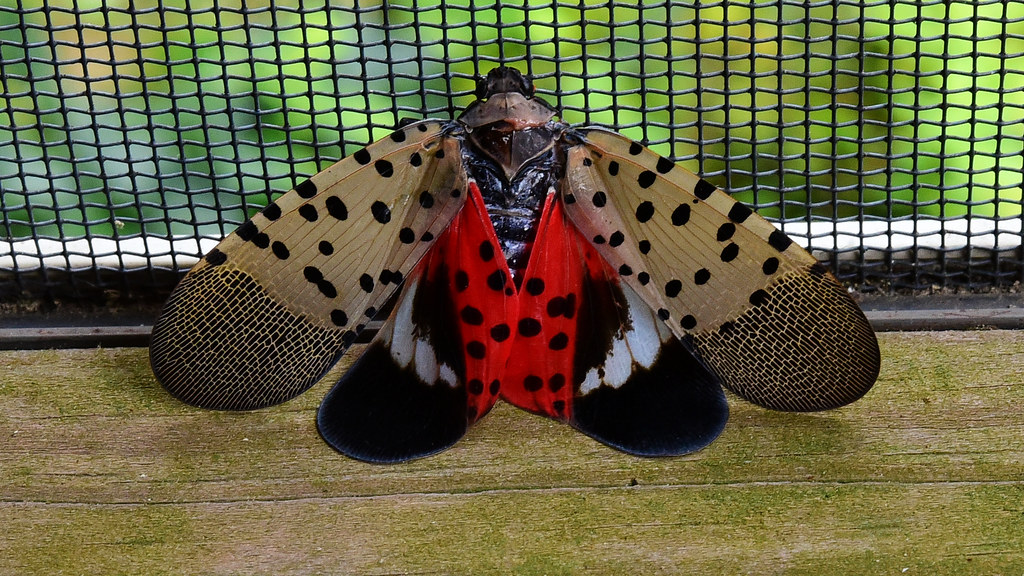
This striking insect looks more like a work of art than a serious ecological threat, with its spotted forewings and brilliant red hindwings that flash during flight. The spotted lanternfly first established itself in Pennsylvania in 2014, likely arriving on a shipment of stone from Asia, and has since been spreading across the eastern United States with alarming determination.
Despite its delicate appearance, this planthopper is a voracious feeder that attacks over 70 plant species, including crucial crops like grapes, apples, and hardwood trees. Using its needle-like mouthparts, it pierces plant stems and feeds on phloem, weakening host plants and excreting sticky honeydew that promotes sooty mold growth. The insect’s feeding habits can stress trees to the point of death, particularly when combined with other environmental pressures.
The spotted lanternfly’s ability to hitchhike on vehicles, outdoor equipment, and even clothing has made it a master of long-distance travel. People unknowingly transport egg masses on their cars, spreading the insect far beyond its natural dispersal capabilities. This human-assisted movement has helped the species establish populations in multiple states, despite aggressive containment efforts.
Japanese Beetle: The Gluttonous Garden Destroyer
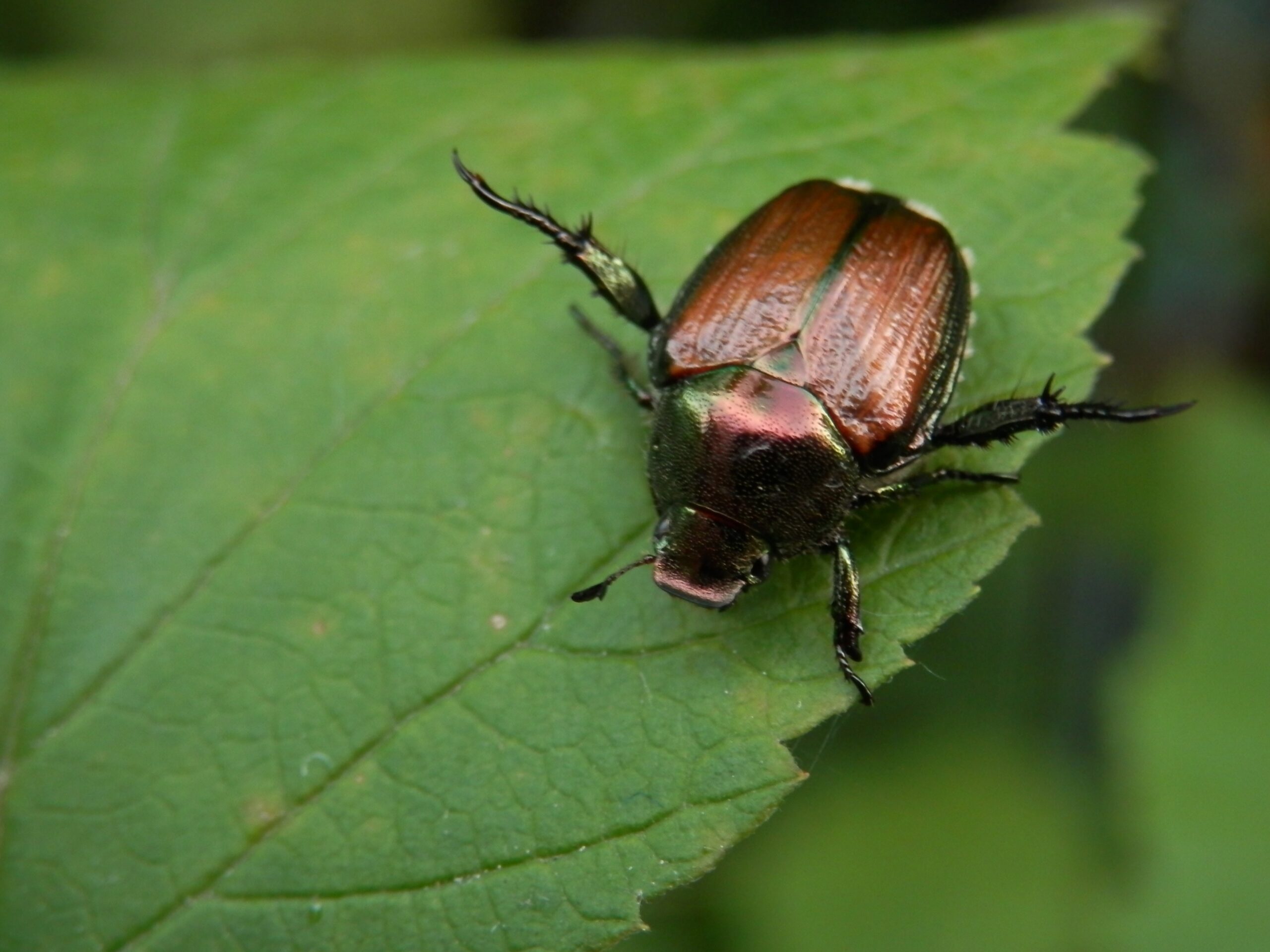
Few insects can match the Japanese beetle’s reputation for sheer destructive appetite and persistence. This copper-colored pest arrived in the United States over a century ago, establishing its first foothold in New Jersey around 1916, and has since become a nationwide nightmare for gardeners and farmers alike.
What makes Japanese beetles particularly maddening is their feeding behavior during the adult stage. They practice what entomologists call “aggregation feeding,” where the presence of one beetle attracts dozens more, creating feeding frenzies that can strip plants bare in hours. These insects show no mercy to roses, fruit trees, or even poison ivy, consuming over 300 different plant species with equal enthusiasm.
The beetle’s dual-phase destruction makes it doubly troublesome. While adults devastate above-ground plant parts during summer, their grubs spend months underground, feeding on grass roots and creating brown patches in lawns across America. This one-two punch of aerial and subterranean damage has made the Japanese beetle a $460 million annual problem for the U.S. economy.
Kudzu Bug: Riding the Vine of Destruction
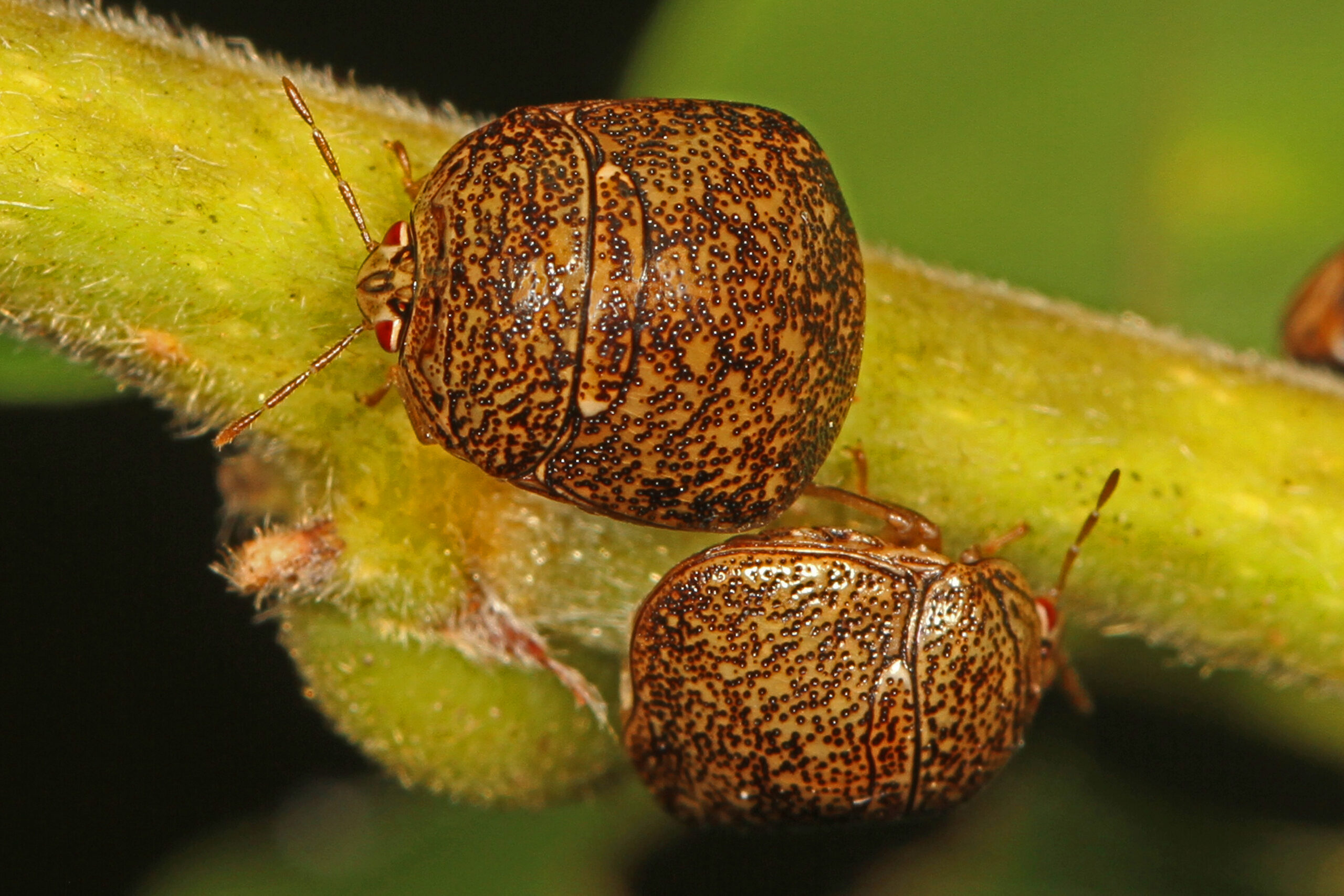
This olive-green insect arrived in the southeastern United States around 2009, and ironically, it might be the rare invasive species that actually helps control another invasive species. The kudzu bug feeds primarily on kudzu, the aggressive vine that has smothered millions of acres of southern forests, earning it the nickname “the vine that ate the South.”
While the bug’s preference for kudzu initially seemed like a biological gift, the situation quickly became more complicated. Kudzu bugs also attack soybeans, a crucial agricultural crop worth billions to American farmers. The insects pierce soybean pods and stems, reducing yields and quality while potentially spreading plant diseases through their feeding wounds.
The bug’s behavior during fall migration creates additional problems for humans. Massive swarms seek overwintering sites in buildings, cars, and outdoor equipment, often causing skin irritation when they come into contact with people. These autumn invasions can be so intense that they temporarily shut down outdoor activities and create genuine public health concerns in affected areas.
Asian Longhorned Beetle: The Hardwood Assassin
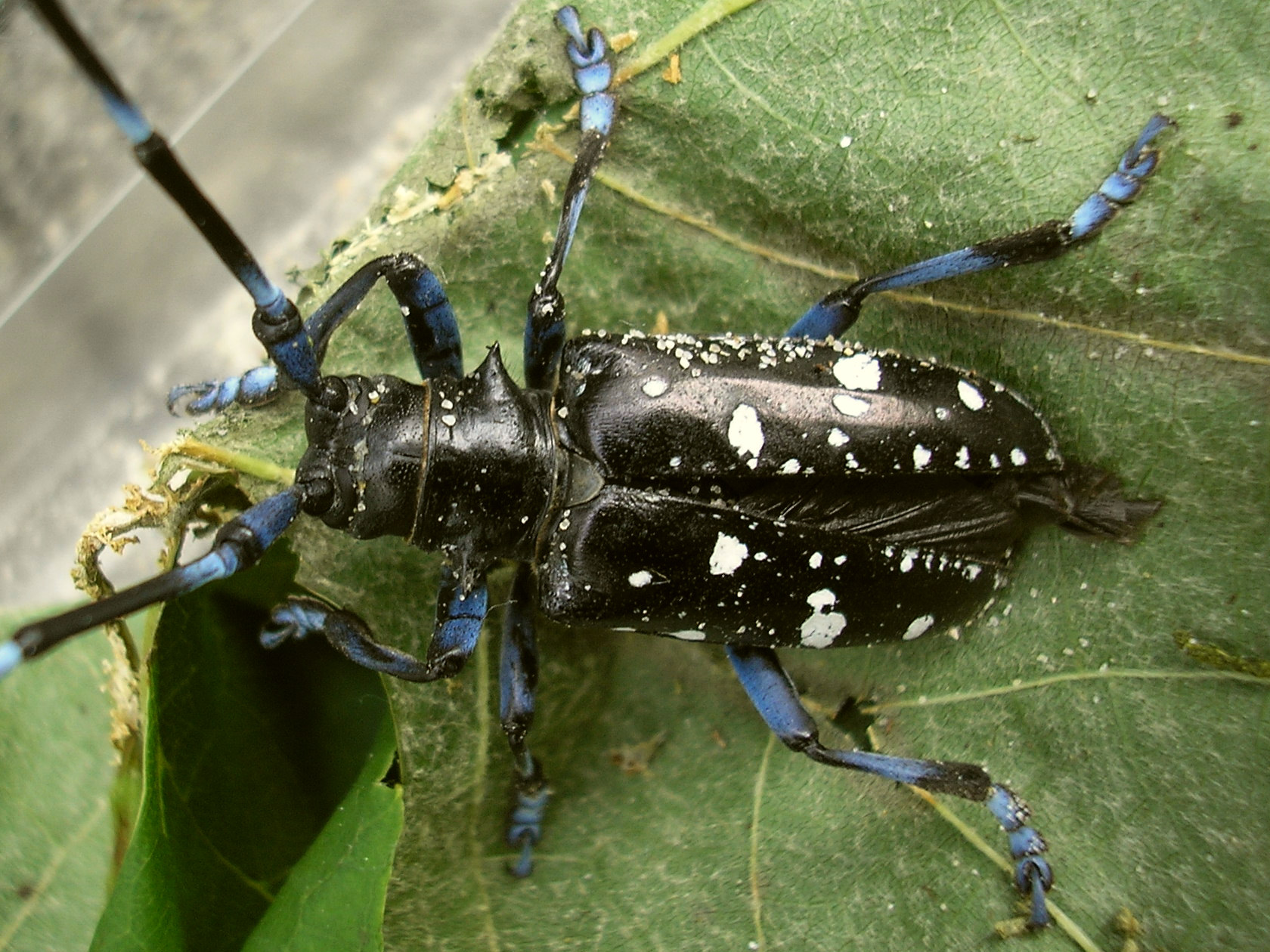
With its distinctive black body adorned with white spots and impressively long antennae, the Asian longhorned beetle commands attention wherever it appears. This imposing insect first arrived in the United States in the 1990s, likely in wooden packing materials from China, and has since become one of the most feared threats to American hardwood forests.
The beetle’s larvae are the real destroyers, boring extensive tunnels through the heartwood of healthy trees. Unlike many wood-boring insects that only attack stressed or dying trees, Asian longhorned beetles show no mercy to vigorous, healthy specimens. They target beloved species like maples, birches, and poplars, potentially killing trees that have stood for decades or even centuries.
What makes this invasion particularly terrifying is its potential scope. Scientists estimate that the beetle could attack and kill up to 35% of urban trees in infested areas, fundamentally altering cityscapes and natural areas across the continent. The economic impact of losing these trees—considering their value for property values, air quality, and ecosystem services—runs into the billions of dollars.
Hemlock Woolly Adelgid: The Tiny Terror of Ancient Forests
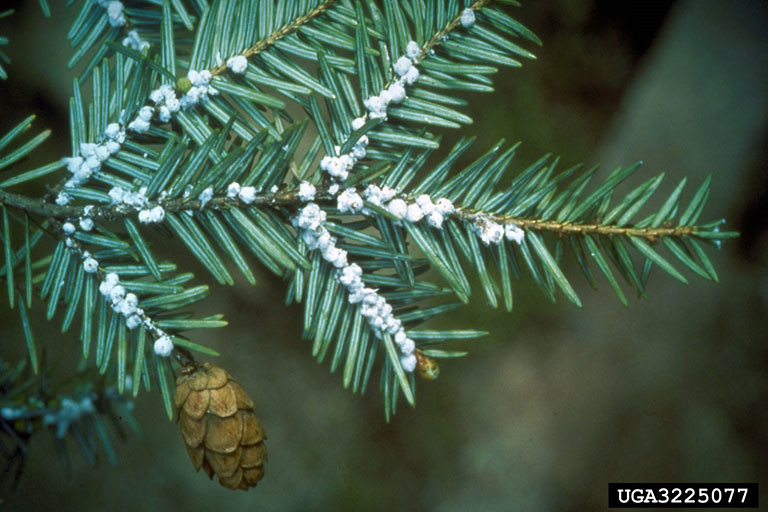
This aphid-like insect measures less than two millimeters long, but its impact on North American forests is nothing short of catastrophic. The hemlock woolly adelgid arrived from Asia in the 1950s and has since been systematically destroying eastern hemlock forests, some of which have stood for over 800 years.
The insect feeds by inserting its stylet into hemlock twigs and extracting nutrients, simultaneously injecting toxins that disrupt the tree’s normal physiological processes. Infested trees show yellowing needles, branch dieback, and eventual death within four to ten years. The adelgid’s cottony white egg masses create distinctive woolly patches on hemlock branches, giving the pest its descriptive name.
The ecological consequences extend far beyond individual trees. Eastern hemlocks create unique microclimates that support specialized communities of plants and animals found nowhere else. As these ancient forests disappear, entire ecosystems collapse, leaving behind simplified landscapes that lack the biodiversity and complexity that took centuries to develop.
Gypsy Moth: The Leaf-Stripping Cyclone
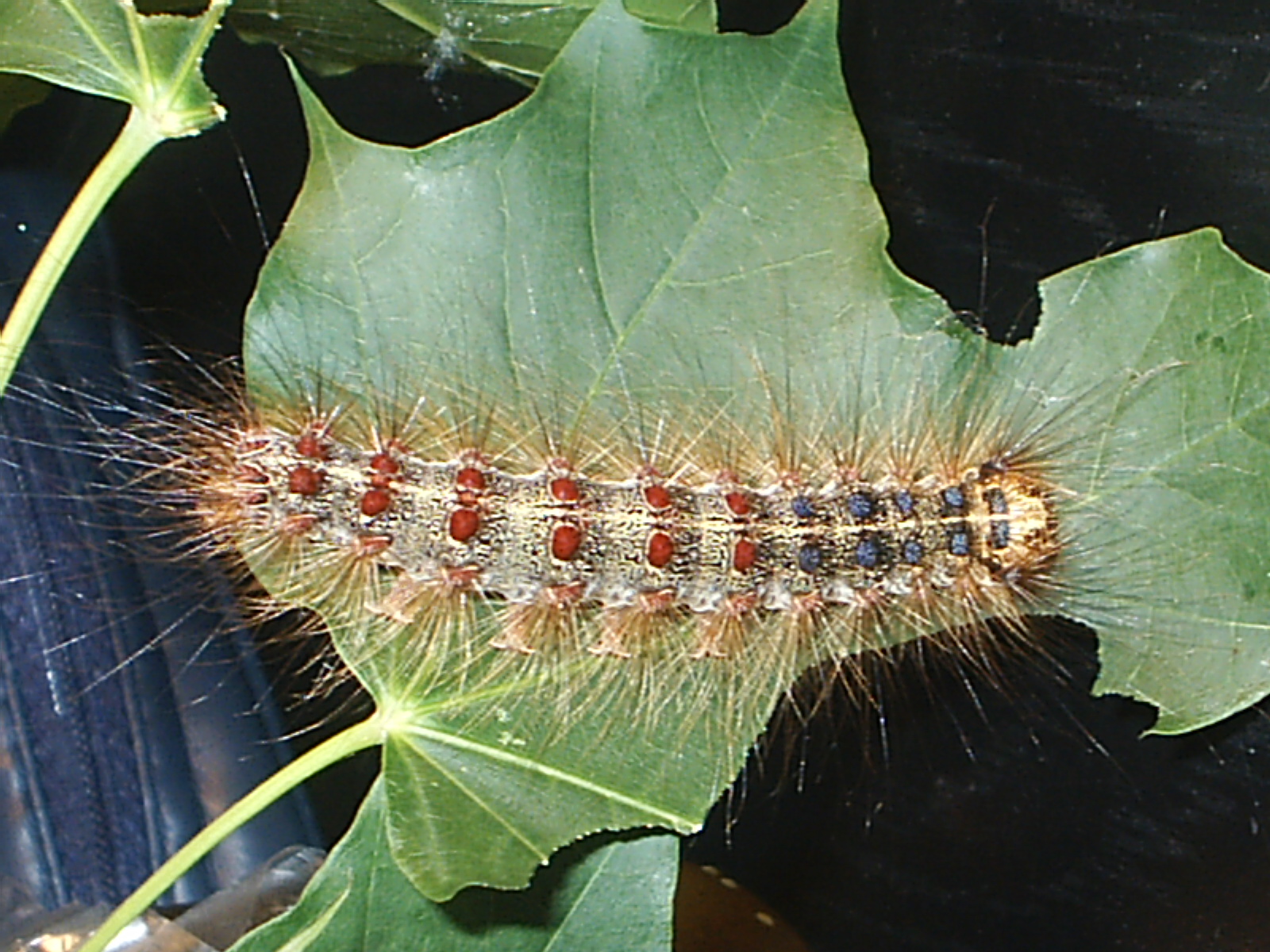
Originally imported to Massachusetts in 1869 for silk production experiments, the gypsy moth has become one of the most destructive defoliating insects in North American history. This European native escaped captivity and has since spread across the northeastern United States, creating periodic outbreaks that can defoliate millions of acres in a single season.
The moth’s caterpillars are eating machines capable of consuming entire tree canopies during peak population years. A single larva can eat up to one square foot of leaves during its development, and when populations explode, the sound of millions of caterpillars chewing can actually be heard in heavily infested forests. The sight of completely defoliated trees in midsummer creates an almost post-apocalyptic landscape.
While many trees can survive a single defoliation event, repeated attacks over several years can kill even the hardiest specimens. The moth’s preference for oak trees makes it particularly problematic, as oaks are keystone species that support hundreds of other organisms. When oak forests decline, the ripple effects cascade through entire ecosystems, affecting everything from soil chemistry to wildlife populations.
Sirex Woodwasp: The Pine Forest Phantom
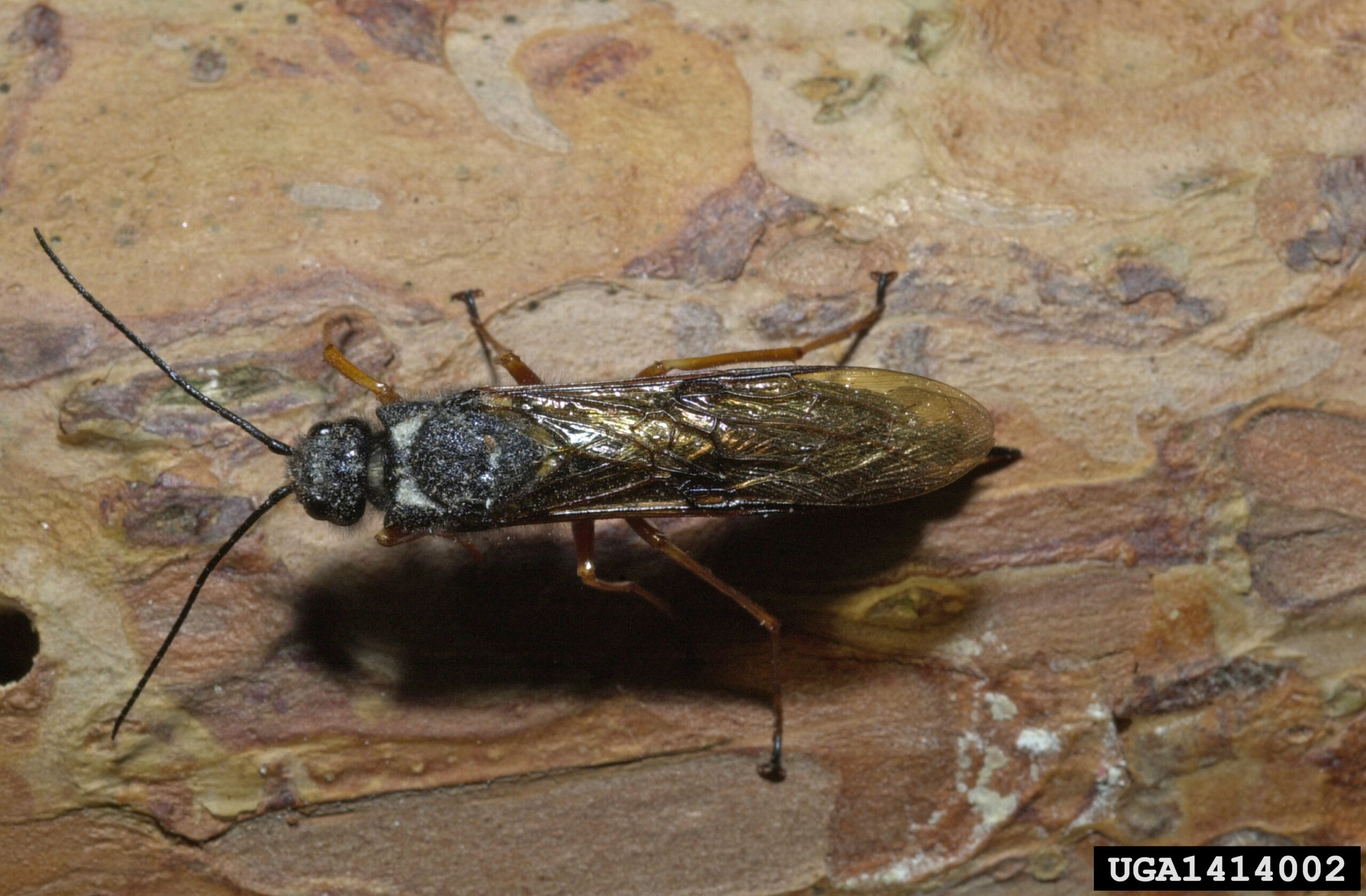
This large, metallic wasp arrived in North America relatively recently, with the first confirmed detection in New York in 2004. The sirex woodwasp attacks pine trees in a particularly insidious manner, using its long ovipositor to drill deep into tree trunks and deposit eggs along with a symbiotic fungus that helps digest wood for developing larvae.
The wasp’s fungal partner, Amylostereum areolatum, is as destructive as the insect itself. This fungus spreads through the tree’s vascular system, disrupting water transport and essentially poisoning the tree from within. The combination of physical damage from boring larvae and chemical warfare from the fungus creates a one-two punch that can kill mature pine trees within a few years.
What makes the sirex woodwasp particularly concerning is its potential to devastate North American pine forests, which cover millions of acres and support both natural ecosystems and timber industries. The wasp shows no preference for stressed trees, readily attacking healthy specimens and potentially causing widespread forest mortality across the continent.
Citrus Longhorned Beetle: The Urban Tree Nemesis
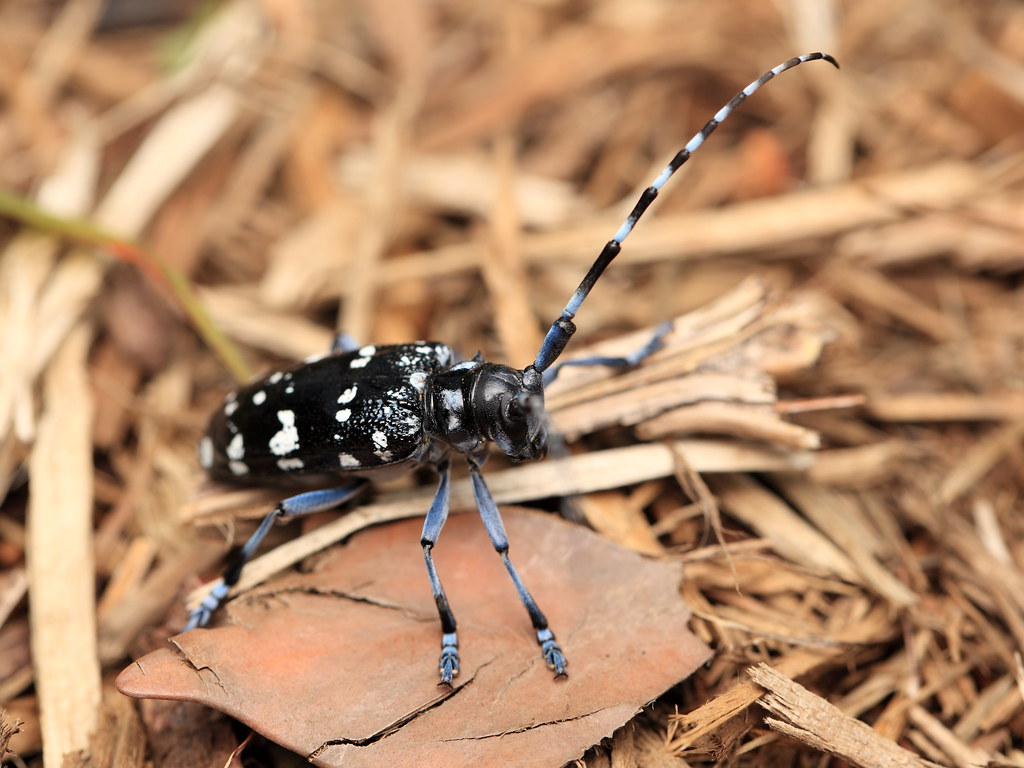
This glossy black beetle with distinctive white markings has established itself as a serious threat to urban and suburban trees across parts of the United States. First detected in southern California in 2001, the citrus longhorned beetle likely arrived in shipments of bonsai trees from Asia and has since spread to multiple states.
The beetle’s larvae create extensive galleries in the wood of host trees, weakening structural integrity and often leading to branch breakage or complete tree failure. Unlike its cousin the Asian longhorned beetle, this species shows a particular preference for citrus trees, but it also attacks maples, elms, and other common urban species. The damage often goes unnoticed until trees begin showing external signs of stress or structural failure.
Urban environments provide ideal conditions for the beetle’s spread, with abundant host trees planted in close proximity and regular human movement that can transport infested materials. The insect’s ability to attack healthy trees in parks, neighborhoods, and commercial landscapes makes it a significant threat to urban forest canopies that provide crucial environmental services to millions of Americans.
Redbay Ambrosia Beetle: The Fungal Farmer’s Deadly Harvest
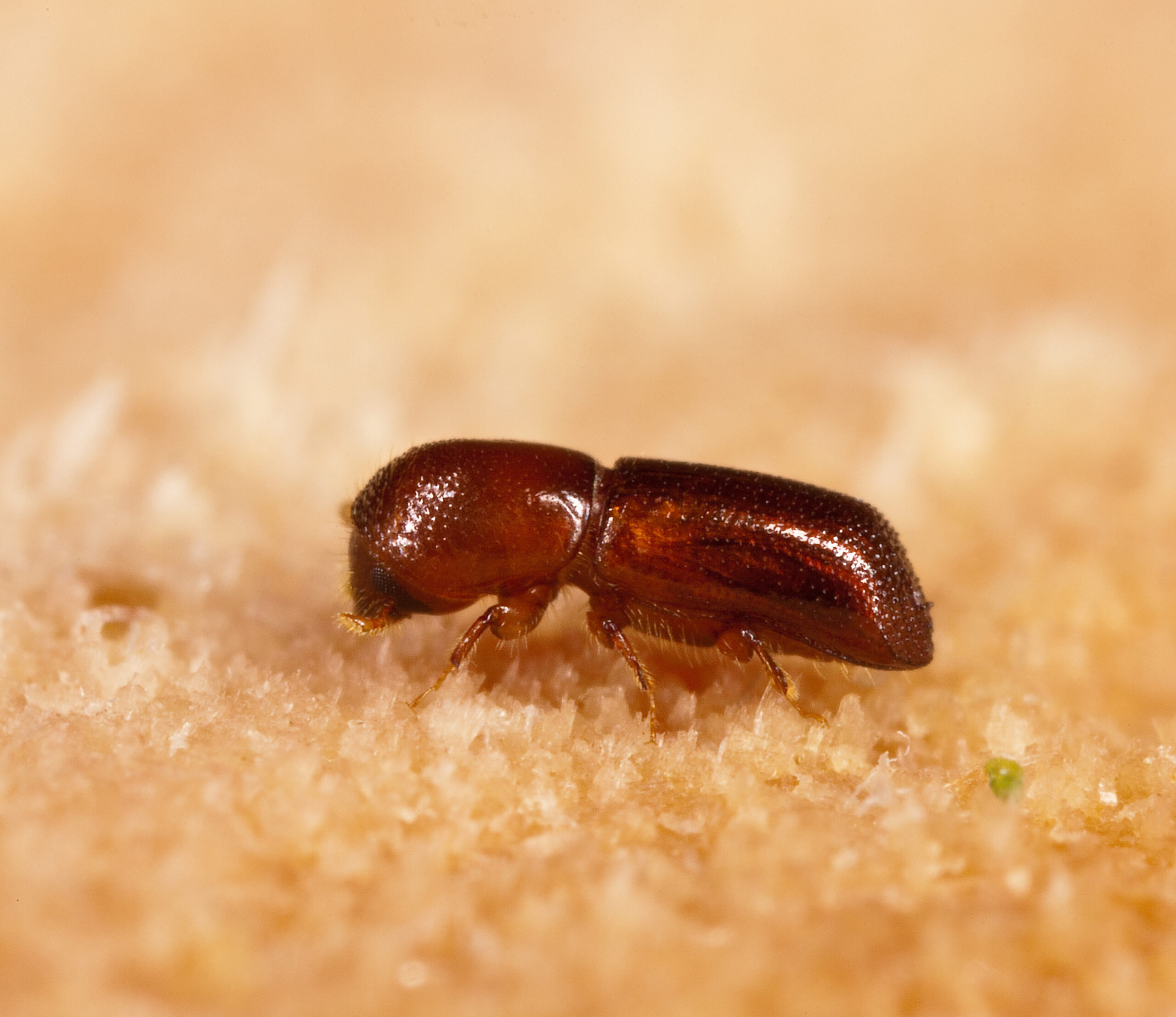
This tiny beetle carries a disproportionately deadly cargo—a fungus that causes laurel wilt disease, one of the most destructive plant diseases to emerge in recent decades. The redbay ambrosia beetle arrived in the southeastern United States around 2002, likely in wooden packing materials, and has since been spreading its lethal fungal partner across the region.
The beetle’s life strategy involves boring into trees and “farming” the fungus Raffaelea lauricola in specialized galleries. While the beetle feeds on the fungus, the pathogen spreads through the tree’s vascular system, blocking water transport and killing the tree within weeks or months. This symbiotic relationship has proven devastatingly effective against native laurel family trees.
The ecological impact has been staggering, with redbay trees virtually eliminated from some areas and avocado groves suffering significant losses. The beetle’s ability to attack over 20 different tree species in the laurel family means that entire plant communities could be restructured as the invasion continues. The economic threat to Florida’s avocado industry alone runs into the hundreds of millions of dollars.
Emerald Ash Borer’s Cousin: The Bronze Birch Borer
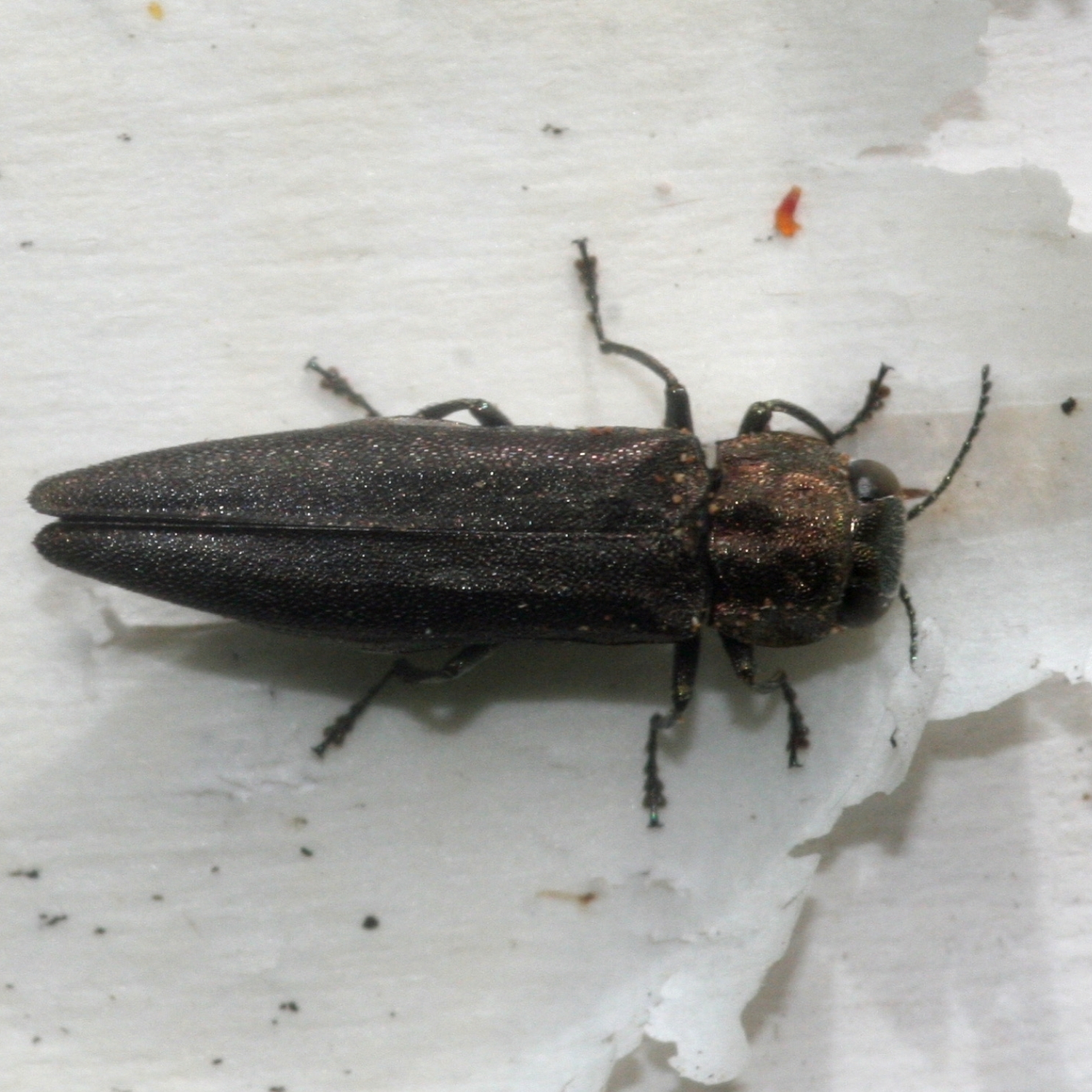
While not technically an invasive species, the bronze birch borer has become increasingly problematic as climate change and urban stresses create conditions that favor this native pest. This metallic bronze beetle has expanded its range and increased its impact on birch trees across North America, behaving almost like an invasive species in its destructiveness.
The beetle’s larvae create zigzag galleries under the bark of birch trees, disrupting nutrient flow and often killing trees within two to three years. What makes this species particularly troublesome is its ability to attack apparently healthy trees that are experiencing subtle environmental stresses. Urban birches planted outside their natural range are especially vulnerable.
The borer’s impact extends beyond individual trees to entire urban forests. As climate change continues to stress tree populations and urban environments become harsher, the bronze birch borer is likely to become an even more significant threat. Cities that have invested heavily in birch tree plantings may face massive replacement costs as their urban canopies succumb to this increasingly aggressive pest.
Conclusion
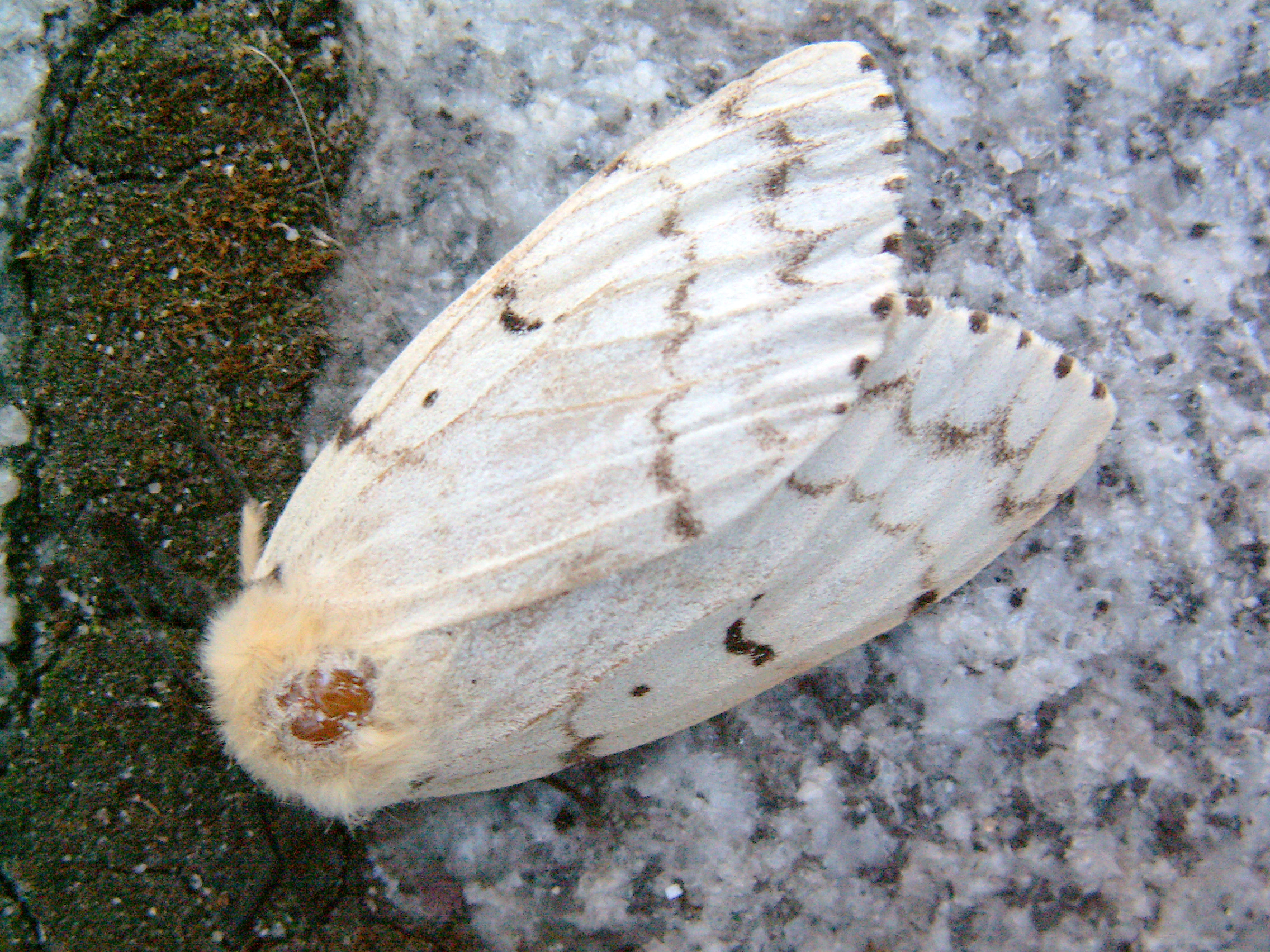
These ten invasive insects represent just a fraction of the foreign species that have already established themselves in American ecosystems, yet their collective impact demonstrates the profound vulnerability of our natural systems to biological invasion. Each species tells a story of human-assisted dispersal, ecological disruption, and the unintended consequences of our interconnected global economy.
The battle against invasive insects is far from over, and new threats arrive regularly through international trade, travel, and climate change. Understanding these hidden invaders is the first step toward protecting our forests, farms, and urban landscapes from future biological catastrophes. Early detection, rapid response, and public awareness remain our best defenses against the next wave of six-legged invaders.
The insects profiled here serve as sobering reminders that small creatures can have enormous impacts, and that the health of our ecosystems depends on vigilance, scientific research, and coordinated action. As global trade continues to accelerate and climate change alters species distributions, the challenge of managing invasive insects will only intensify. What new invaders are already among us, waiting to be discovered?

